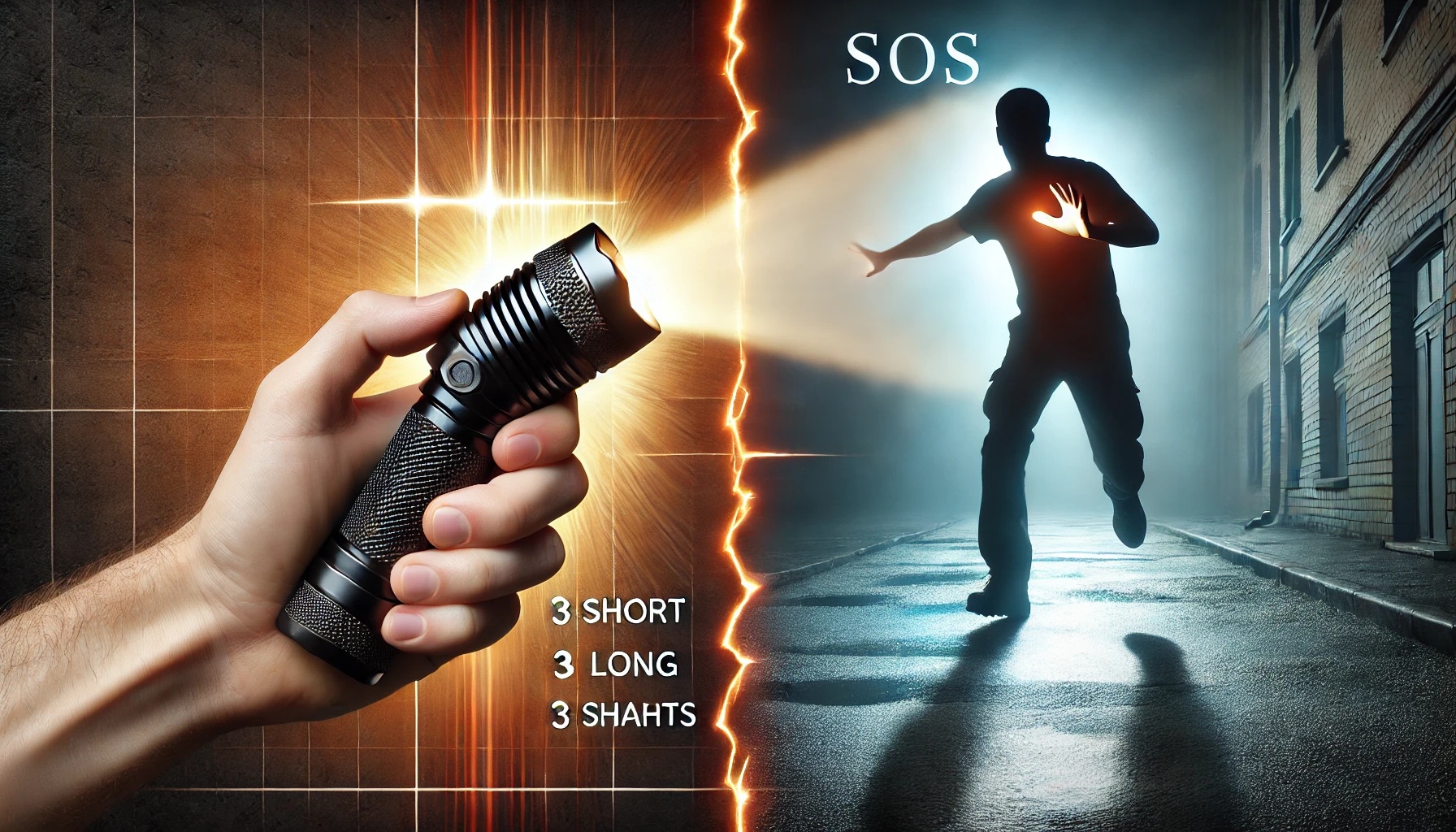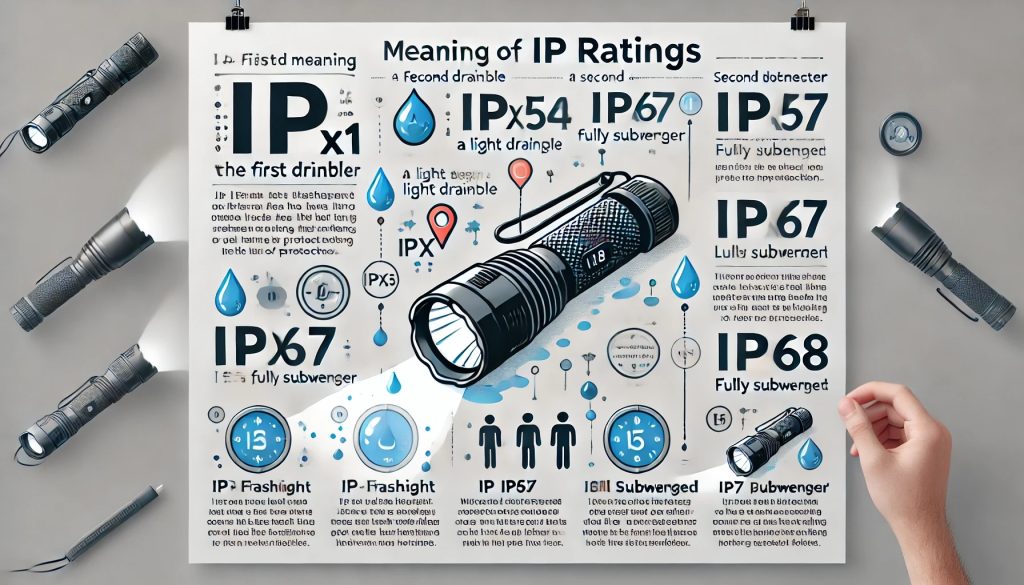While a tactical flashlight is undoubtedly a powerful tool for illuminating the darkness, its utility extends far beyond simply providing light. Mastering tactical flashlight techniques can significantly enhance your personal safety through self-defense applications and prove crucial in emergency situations by enabling effective signaling. This article will explore practical ways to utilize the features of your tactical flashlight to protect yourself and communicate for help when it matters most.
Enhancing Personal Safety: Tactical Flashlight Techniques for Self-Defense
A tactical flashlight, with its robust construction and often high lumen output, can be a valuable asset in self-defense scenarios. Here are some key tactical flashlight techniques to consider:
1. The Blinding Effect: Temporary Disorientation
One of the most effective self-defense applications of a tactical flashlight is its ability to temporarily blind or disorient a potential aggressor. By suddenly shining a high-lumen beam directly into their eyes, you can disrupt their vision, giving you a crucial window of opportunity to escape or take further action. Many tactical flashlights feature a high-intensity momentary-on mode, which is ideal for delivering these quick bursts of blinding light.
2. Utilizing Strobe Mode: Disrupting Focus
The strobe mode, found on many tactical flashlights, emits a rapid, flashing light that can be highly disorienting and can impair an attacker’s ability to focus or track your movements. This erratic flashing can also be visually overwhelming, providing another opportunity to create distance or call for help. Understanding how to quickly activate the strobe mode on your tactical flashlight is a valuable skill.
3. The Tactical Grip: Enhancing Control and Striking Capability
Proper grip is essential for effective use of a tactical flashlight in self-defense. The “ice pick” grip (holding the flashlight in your fist with the bezel protruding from the bottom) or the “syringe” grip (holding it overhand) can provide a secure hold and allow you to use the flashlight as an impact tool. The crenelated bezel found on some tactical flashlights, as mentioned in our guide on “Illuminate with Confidence: Choosing the Top-Rated Tactical Flashlights for Reliable Lighting,” can further enhance the effectiveness of strikes. Practice different grips to find what feels most natural and secure for you.
4. Combining Light and Movement: Creating Confusion
In a confrontation, don’t remain stationary. Use the bright beam of your tactical flashlight to scan and identify threats while moving dynamically. Quickly shifting the light source can further disorient an attacker and make it harder for them to target you.
5. Verbal Commands and Light: Establishing Dominance
While not a physical technique, a firm verbal command paired with the sudden illumination of a bright tactical flashlight can sometimes be enough to deter a potential threat. This assertive action can project confidence and make you a less appealing target.
Essential Communication: Tactical Flashlight Techniques for Signaling
In emergency situations, a tactical flashlight can be a vital tool for signaling for help. Here are some crucial tactical flashlight techniques for communication:
1. SOS Signal: The Universal Call for Help
The SOS signal (three short flashes, three long flashes, three short flashes) is an internationally recognized distress signal. Many tactical flashlights have a dedicated SOS mode that automates this sequence. If your flashlight doesn’t have this mode, you can manually create the signal by quickly pressing and releasing the power button for the short flashes and holding it down for slightly longer for the long flashes. Repeat the sequence until help arrives or you need to conserve battery power. Source: Wikipedia – SOS
2. Attracting Attention: Flashing Patterns
In situations where you need to attract attention but SOS might not be necessary (e.g., signaling to rescuers in a general area), using intermittent flashing patterns can be effective. Simply flashing your tactical flashlight on and off repeatedly can draw the eye, especially at night or in low-visibility conditions.
3. Mirroring Signals: Responding to Search Parties
If you hear or see signs of a search party (e.g., a helicopter, distant voices, or other light signals), you can use your tactical flashlight to mirror their signals. This can help them pinpoint your location. For example, if they flash their light three times, respond with three flashes of your own.
4. Directional Signaling: Indicating Your Location
In some scenarios, you might need to indicate your direction or location to rescuers. You can do this by shining a steady beam in the direction you are heading or towards your location. Be mindful of light discipline if there are potential threats in the area.
5. Utilizing Momentary-On for Brief Signals
The momentary-on function can be useful for sending brief, controlled signals without fully activating the flashlight for extended periods, helping to conserve battery life.
Practicing Your Skills: Familiarization is Key
Like any self-defense or emergency preparedness skill, mastering tactical flashlight techniques requires practice. Familiarize yourself with the different modes of your tactical flashlight and practice activating them quickly and efficiently. Experiment with different grips and practice signaling patterns in a safe environment. This muscle memory will be invaluable in a real-world situation.
Conclusion: Empowering Yourself with Light
A tactical flashlight is more than just a tool for seeing in the dark; it’s a versatile instrument that can empower you with the ability to defend yourself and signal for help. By understanding and practicing these tactical flashlight techniques, you can significantly enhance your personal safety and preparedness for a wide range of situations. From the blinding power of a high-lumen beam to the universally recognized SOS signal, your tactical flashlight can be a crucial lifeline when you need it most.


